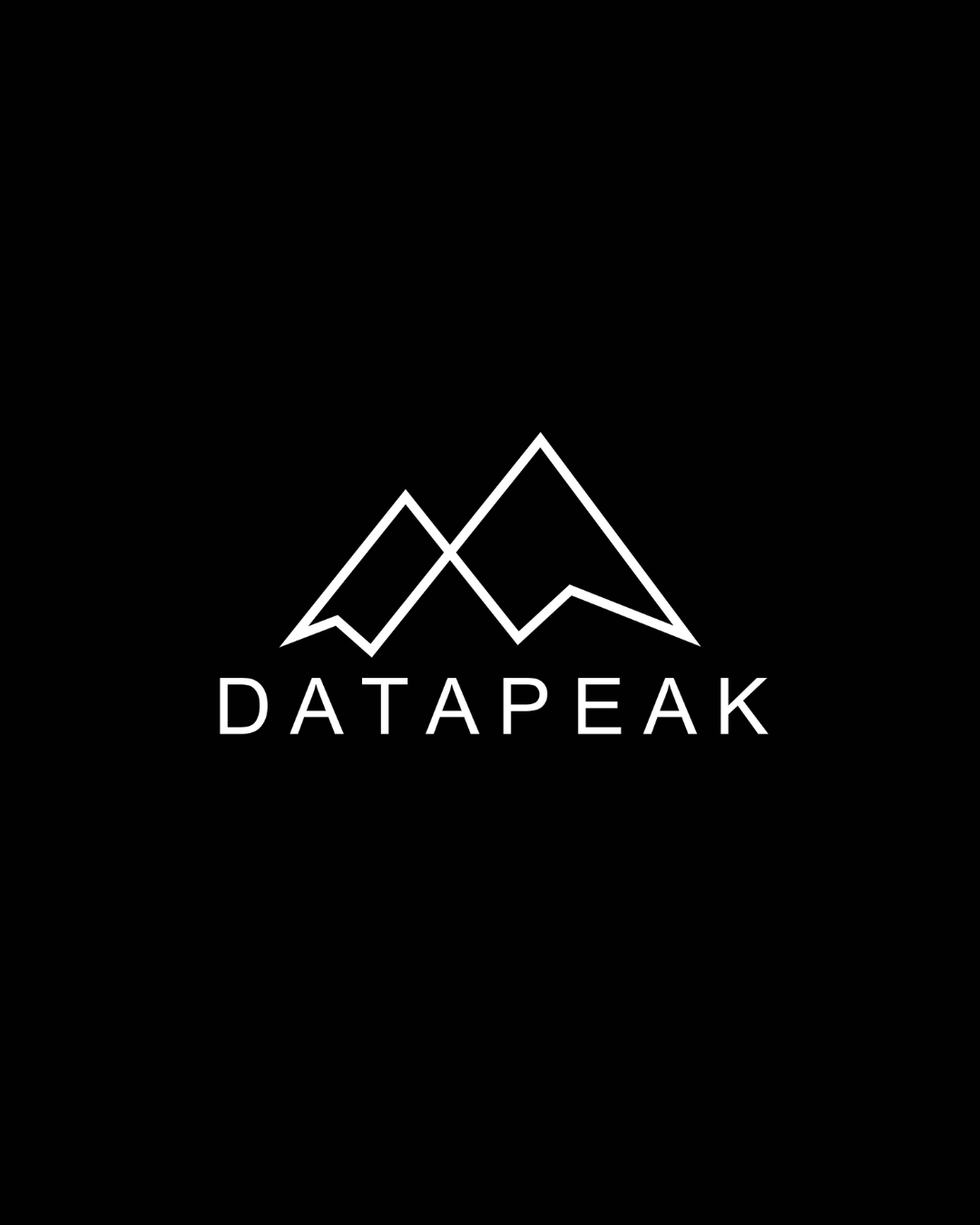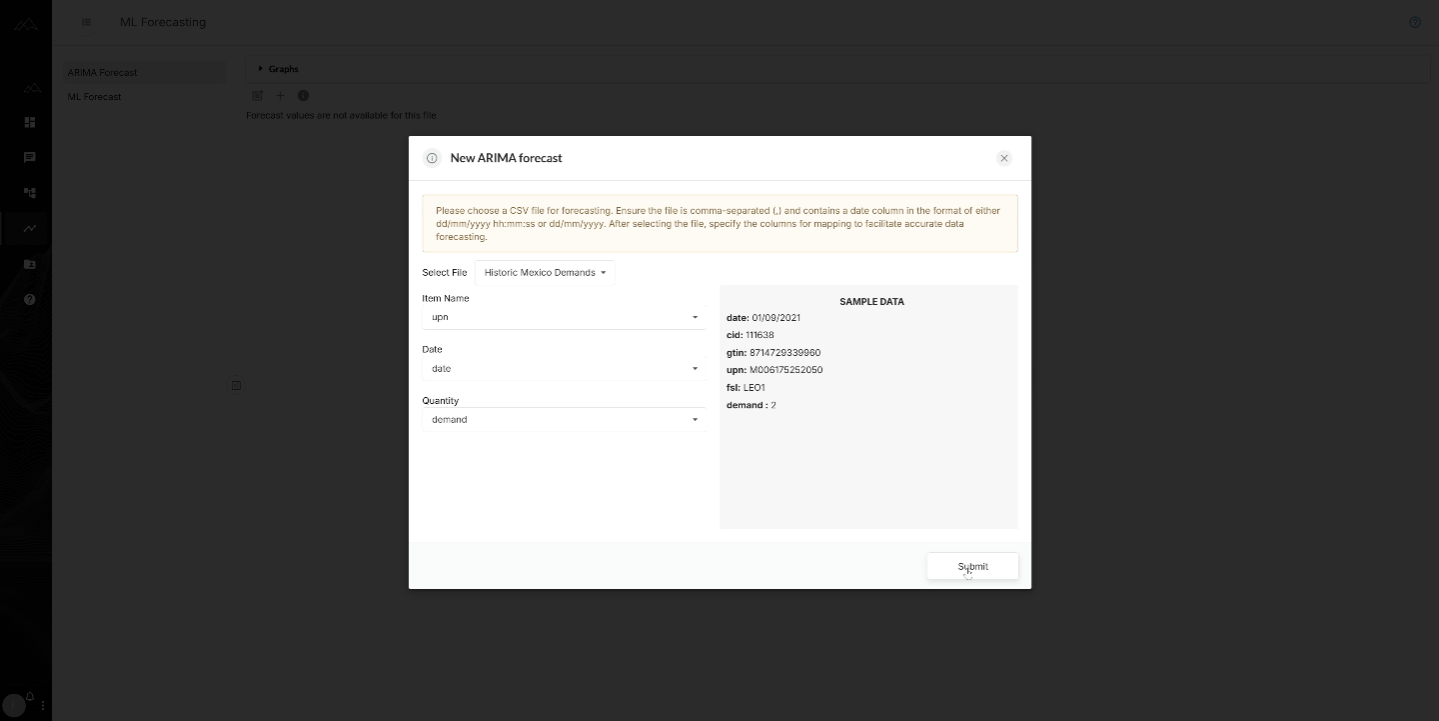Predict What’s Next: Smarter Forecasting with DataPeak ML Tools
Why Forecasting Is Core to Data-Driven Strategy
Forecasting isn’t just about numbers, it’s about preparing for the future. Whether it’s manufacturers predicting demand or the public sector planning resources, reliable forecasting ensures that decisions are proactive instead of reactive.
DataPeak’s ML Forecasting tool puts advanced predictive methods like ARIMA and machine learning into a no-code interface, helping organizations generate accurate, context-aware forecasts without relying on data science teams.
ARIMA Forecasting: A Proven Approach
ARIMA (Auto-Regressive Integrated Moving Average) is one of the most widely used forecasting methods.
Ideal for time-series data like sales, production, or staffing.
Captures trends and seasonality using historical data.
Trusted across industries for baseline forecasting.
Example: A food manufacturer might use ARIMA to predict weekly demand for specific SKUs based on sales history.
ML Forecasting: A Smarter, Context-Aware Alternative
For more complex scenarios, machine learning forecasting goes beyond ARIMA:
Accounts for external factors such as public holidays, seasonality, or anomalies.
Adapts to changing patterns more dynamically.
Has a strong track record of delivering highly accurate predictions.
Example: In the public sector, ML forecasting can adjust for seasonal budget spikes (like year-end spending) or holiday-related service demands.
Creating a Forecast in DataPeak
The process is simple and no-code:
Choose your method → ARIMA or ML.
Select a dataset → must include a date or time column.
Map your fields → item name, date, and quantity.
Submit → results populate as both a graph and a table.
View details → drill down for forecast accuracy and underlying assumptions.
Pro Tips: Making Forecasts Work for You
Pick the right method: Use ARIMA for steady, historical patterns; ML when external context matters.
Clean your data first: Inconsistent time-series inputs lead to weaker forecasts.
Validate with reality: Compare predictions to recent results to refine accuracy.
Automate downstream: Feed forecasts into workflows for scheduling, procurement, or resource planning.
Why Forecasting in DataPeak Stands Out
Legacy forecasting requires coding, specialized skills, or separate tools. DataPeak simplifies this by:
Combining ARIMA and ML in one no-code interface.
Making forecasts available immediately across dashboards and workflows.
Giving non-technical teams the power of predictive analytics.
This makes predictive analytics accessible to everyone, from plant managers to public sector program directors.
FAQ: Forecasting in DataPeak
Q: What datasets can be used for forecasting?
A: Any dataset with a date or time column, such as sales, staffing, or production logs.
Q: What’s the difference between ARIMA and ML forecasting?
A: ARIMA is a traditional statistical model; ML forecasting incorporates external factors like seasonality and holidays.
Q: Who can create forecasts in DataPeak?
A: Admins and sub-admins.
Q: Can forecasts be exported or integrated into other systems?
A: Yes. Forecasts can feed into dashboards, workflows, or APIs.
From Data to Decisions with ML Forecasting
Forecasting doesn’t have to be complex. With ML Forecasting in DataPeak, organizations can blend traditional ARIMA with advanced machine learning to produce accurate, actionable insights.
From manufacturing demand planning to public sector resource allocation, forecasting gives decision-makers the clarity they need to act with confidence.
Ready to predict what’s next? Watch the demo or book a walkthrough to see how DataPeak makes forecasting simple and powerful.
Keyword Profile: DataPeak ML forecasting, DataPeak predictive analytics, DataPeak no-code AI, ARIMA vs ML forecasting, no-code forecasting tools, predictive analytics in manufacturing, forecasting public sector planning




